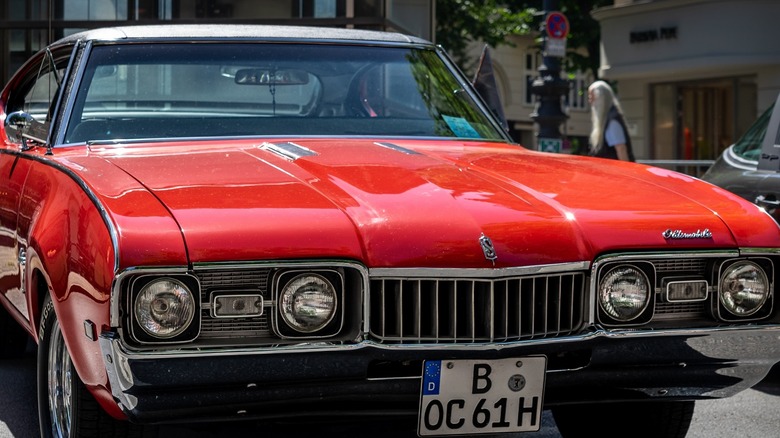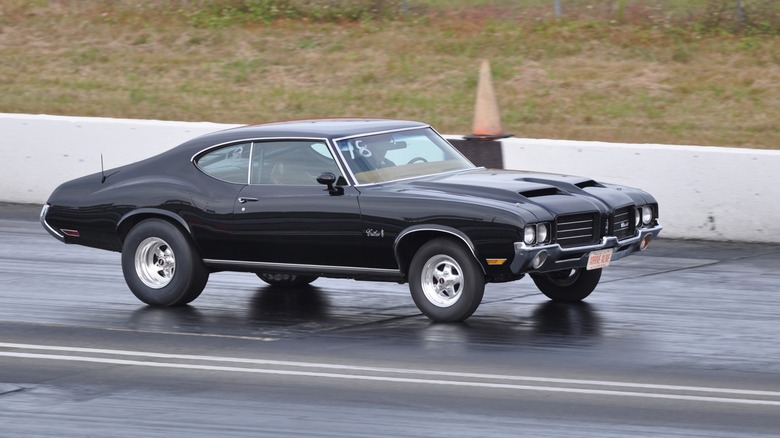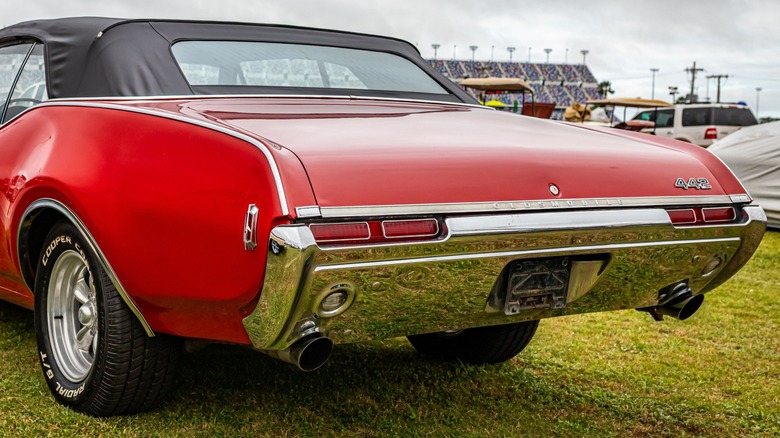Here's What Made The Oldsmobile Ram Rod 350 Engine So Special
In 1968, Oldsmobile released the W-31 package for its third-generation F-85 coupe lineup. At the heart of the W-31 package was a 350 cubic-inch V8 with a 4.057-inch cylinder bore and 3.385 inches of stroke, dubbed the Ram Rod 350. With a 10.5:1 compression ratio, 308-degree duration camshaft, and 2.00-inch intake valves, the Ram Rod 350 produced 325 horsepower and 390 lb-ft of torque.
The W-31 package offered a choice between a three- or two four-speed manual transmissions and a limited-slip rear differential with either a 3.91:1 or 4.33:1 gear ratio. It also required "a heavy-duty clutch and cooling system, along with dual exhaust, while excluding air conditioning, power brakes, and an automatic transmission," according to Hemmings.
While 325 horsepower was respectable in 1968, other engines had higher numbers. For example, Chrysler's 1968 426 cubic-inch Hemi produced 425 horsepower and 489 lb-ft of torque. But it's not horsepower or the twin-inlet air cleaner with forced air induction that made the Ram Rod 350 so special. It was special because of its intended purpose and the opportunity it afforded younger drivers at the time.
The Ram Rod 350's mission
In the late 1960s, auto racing sanctioning bodies like NASCAR and NHRA required automakers to sell street-legal versions of their intended racecar entrants under a process known as homologation. While the specific rules vary among organizations and year to year, there's little doubt that the Oldsmobile Ram Rod 350 W-31 F-85 was produced and sold to the general public to allow its inclusion at NHRA events.
According to Britannica, organized automobile racing began as early as 1894 in France and 1895 in the United States. Newspapers initially used the events to sell more papers, but automakers soon saw the promotional value of winning races. The New York Times says the racecars used in early Nascar events "were practically driven straight from dealer's lots to the track."
Automakers soon began producing purpose-built cars for racing, but racing organizers set homologation rules to keep the "Stock Car" in stock car racing. Luckily for muscle car enthusiasts, that meant practically anyone could buy what was essentially a factory racecar right off the showroom floor.
The 1968 Oldsmobile Ram Rod 350 presents an opportunity for young drivers
Throughout the 1960s, cars became faster, and cinematic movies glorified high-speed driving on the silver screen. Soon, automobile insurance carriers realized that young drivers and high-performance cars were a dangerous mix with expensive insurance claims. The insurance companies pushed back, charging younger drivers higher premiums to cover them, especially when driving a muscle car. But insurance providers didn't see the F-85 Oldsmobile coupes as muscle cars, so young drivers could get reasonable rates to drive them.
Deseret News says the average car price hovered around $3,400. Olds enthusiast Larry Speicher told Hemmings the 1968 Oldsmobile Cutlass he bought as a kid priced out at $4,320 with the W-31 package. In addition to the W-31 and Ram Rod 350 engine, Larry ordered his Cutlass "with options such as the Super Stock II wheels, radial tires, the Rally Pac, Sport suspension, radio, and power steering." While that $4,320 in 1968 equates to about $38,000 today, it's still a bargain price for a factory racecar.


